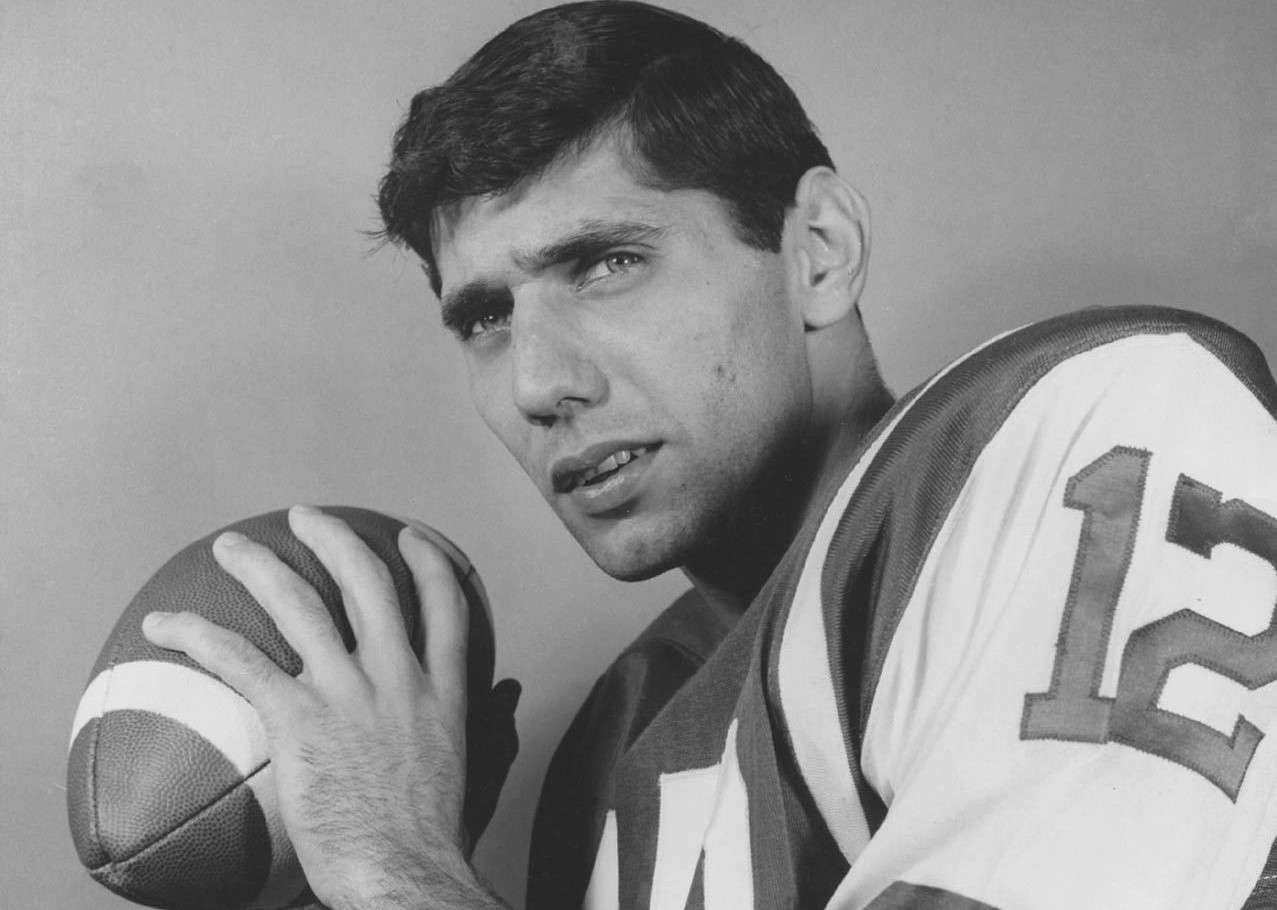Not all that long ago, the massive contracts awarded to today’s top NFL players would have been unthinkable.
When pro football was in its infancy, salaries weren’t lucrative. The very first athlete to earn money for playing a game of football made just $500. For decades, professional football players routinely worked “regular” jobs in the off-season. In the mid-1960s, star NFL players earned $50,000 per year, or about 7.5 times the median income for an American family. In 2022, the top NFL player’s salary was $50,000,000—666 times the median income reported for households.
This enormous increase in the salaries of top-earning professional football players represents a 1,000-fold increase in earnings between 1964 and 2022. The salary growth rate for the highest-paid NFL players far outstrips the regular rate of inflation, with the Consumer Price Index (CPI) seeing an 8-fold increase from 1960 to 2022.
[To learn more, jump to our article about how inflation is impacting everyday consumers.]
How did professional football salaries reach the soaring heights they now occupy, promising the most talented players a level of wealth annually that many workers will never see in a lifetime? To tell that tale, we need to go back to the beginning—the first-ever professional football play in history.
A Note About Historical Salary Data
In professional football, as in professional baseball and basketball, historical salary data is more limited than salary data from recent decades. While salary data for the top-earning players in the National Football League during the 1990s and beyond is comprehensive and widely available, the same can’t be said for the decades that came before. Historical recordkeeping wasn’t as thorough, and in many instances, the details of players’ contracts even up to the late 1960s were not made public in the first place. As such, player compensation data, particularly that which dates back to the 1960s or earlier, has been drawn from numerous sources, as cited in the article below.
Unless otherwise noted, the salary and revenue data contained in this article is presented in nominal dollars and has not been adjusted for inflation.
[Get a deeper look at salary inflation across all professional sports.]
The First Salaries Paid to Football Players
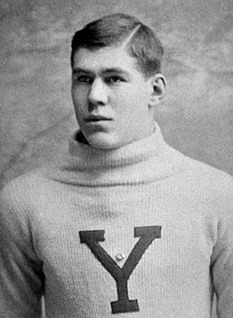
IMAGE SOURCE: Wikimedia Commons, public domain
The humble origins of professional football barely even resemble the multimillion-dollar salaries of modern NFL superstars.
According to the Kentucky Pro Football Hall of Fame, the very first person to get paid for playing football was steel mill worker William ‘Pudge’ Heffelfinger, way back in 1892. Heffelfinger, an amateur player for the Chicago Athletic Association, was considered the best football player at the time. Rival Pittsburgh football teams Pittsburgh Athletic Club and Allegheny Athletic Association sought to recruit him, with the Pittsburgh Athletic Club first offering him $250 and the Allegheny Athletic Association successfully getting him to join their team for the price of $500, ExplorePAHistory.com reported.
At a time when laborers earned an average rate of less than $0.14 per hour, $500 was a considerable amount of money to play a football game. Still, $500 was equal to the poverty line in 1890, according to BizFluent (and only 45 percent of Americans earned wages above the poverty line), so it wasn’t exactly massive wealth.
Paying players to play football became more commonplace as the turn of the century approached, but it would still be a long time before even the most skilled athletes in the game could count on their work on the field to serve as their livelihood, much less before quarterbacks would rake in tens of millions of dollars per season the way they do today. Beyond Heffelfinger, many of the first paid football players would make $50 per game. Early professional football players were getting paid, but they weren’t getting rich purely by playing football.
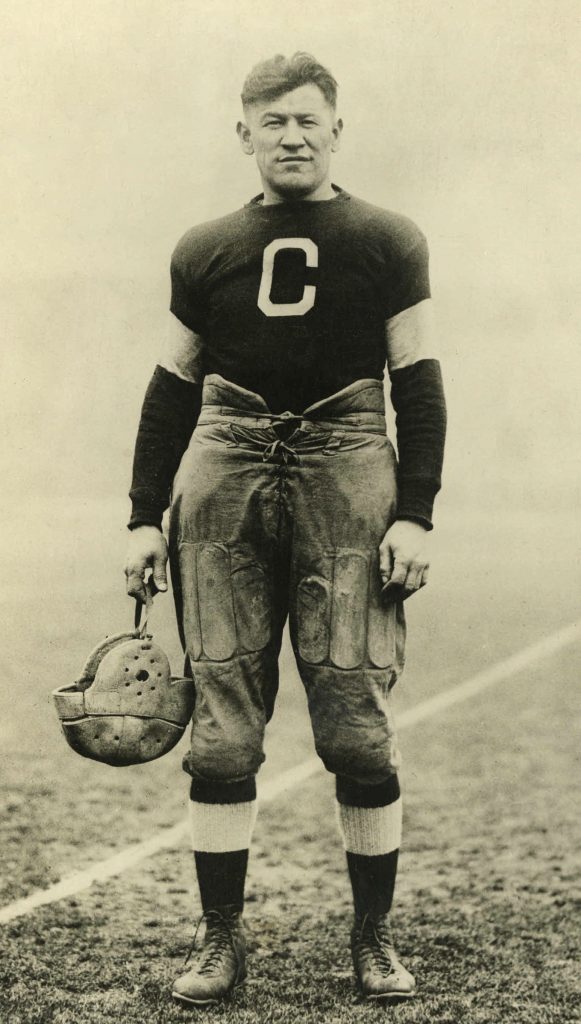
IMAGE SOURCE: Wikimedia Commons, public domain
Late in the 1915 season, the Canton Bulldogs recruited Jim Thorpe at a salary of $250 per game. He played two games with the team that first season. Thorpe would draw in unprecedented crowds at the gate and would lead his team to victory in what the Pro Football Hall of Fame called “unofficial world championships” three times between 1916 and 1919. When the National Football League formed in 1920, Thorpe was named president.
An exceptional athlete who excelled in multiple sports, Thorpe also had a career as a professional baseball player and on a barnstorming team in professional basketball. His football earnings that first season—as he was hired late in the season—amounted to only $500. That figure is more than 25 percent below the $687 average earnings for 1915, as reported by U.S. News & World Report. However, Thorpe’s per-game salary was still considered quite high. In the following—full—seasons Thorpe would go on to play, his earning potential was significantly increased due to the number of games played. The Canton Bulldogs played 10 games in 1916, according to the Pro Football Hall of Fame, putting Thorpe’s earnings for the season at around $2,500—more than 3.5 times the average earnings reported for the previous year.
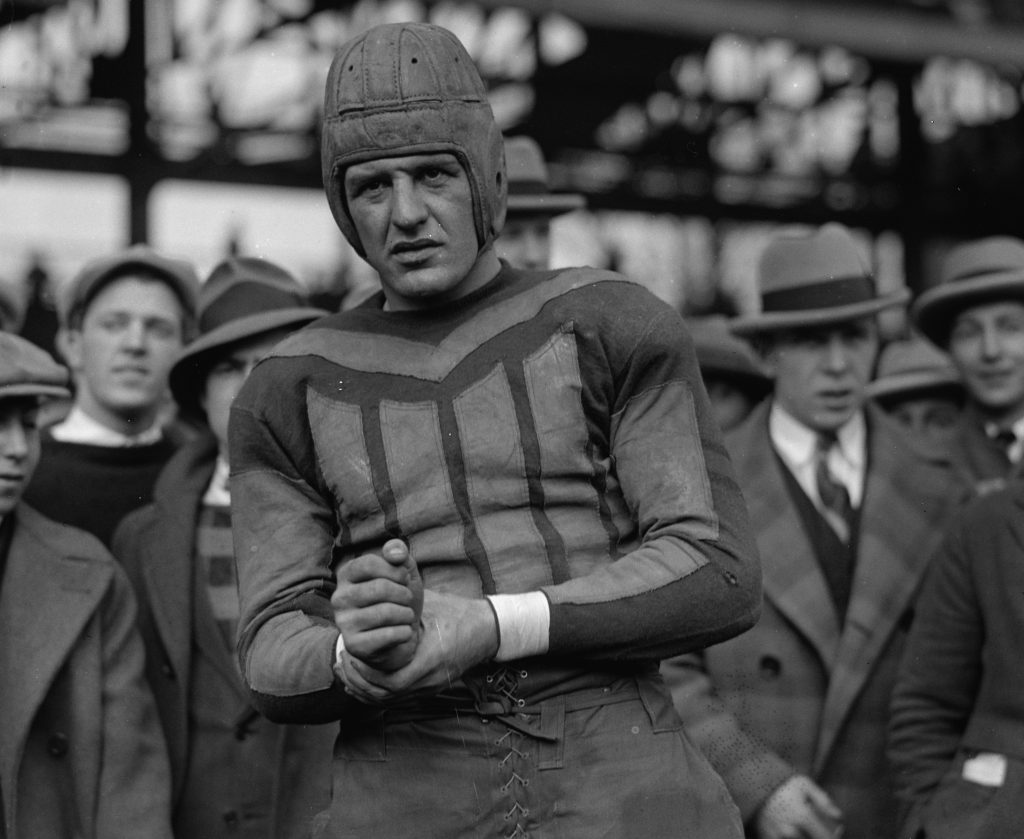
IMAGE SOURCE: National Photo Company Collection, Wikimedia Commons, public domain
Grange managed this feat through a contract that included a share of game ticket sales in addition to payment for the 19 games in which he played over a two-month period. Additional earnings arising out of endorsements and a movie deal brought Grange’s earnings to more than $200,000, according to Forbes.
Grange’s reported earnings were truly the definition of an outlier, both among athletes paid to play football and among American workers in general. The average net income reported on individual tax returns for 1926 was just $5,306, according to the IRS, and most paid football players at the time earned less than that. In fact, many “professional” football players worked other jobs in the off-season—and that would continue to be the case until at least the middle of the 1960s, according to the Kentucky Pro Football Hall of Fame.
In the 1920s, many players were still paid on a per-game basis, and per-game earnings of $100 to $300 (or less) were still common. However, Red Grange reported making a stunning $100,000 for the 1926 season, according to Career Trend.
[Jump to our focus on salary inflation in professional baseball.]
Top Football Salaries of the 1930s Through 1950s
By the 1930s, the highest-earning pro football players—in general—were surpassing the earnings of the average American family by a considerable amount. The amount by which top NFL salaries out-earned average income rates as the years progressed is telling.
However, not all pro football players were so fortunate. The differences in salaries offered by different teams were pronounced and, at times, problematic. (We’ll talk more about that later.)
In 1937, the highest-paid football player was Sammy “Slingin’ Sam” Baugh, who, according to Forbes, was earning $8,000 playing quarterback for the Washington Redskins. Baugh’s football salary far surpassed the earnings of most pro football players at the time. It also more than doubled the $3,340 average net income amount the IRS reported for American workers during this in the midst of the Great Depression.
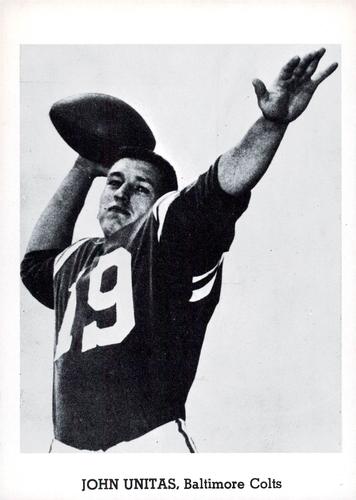
IMAGE SOURCE: Jay Publishing, Wikimedia Commons, public domain
By the 1950s, star football players’ salaries were creeping up into the five-digit range. Former Baltimore Colts quarterback Y.A. Tittle, for example, was offered a $13,500 deal by the San Francisco 49ers in 1951. His colleagues were largely earning less than $6,000 per year even as the end of the decade approached, Career Trend reported.
The South Florida Sun-Sentinel reported that, in 1958, NFL players were still fighting for a $5,000 minimum salary. Meanwhile, quarterback and future MVP Johnny Unitas starred in what would later be termed “the Greatest Game Ever Played” between the Baltimore Colts and the New York Giants, earning a salary of $17,500.
How do these earnings compare to those of the average American worker? In 1951, the Census Bureau reported an average family income of $3,700. Tittle was earning more than 3.5 times what the average family made. By 1958, the average family income in the United States (per the Census Bureau) would climb to $5,100, putting the average football player’s salary about on par with that of the average American worker.
$50,000-Per-Year Top Football Player Salaries Emerge in the 1960s and Grow Rapidly
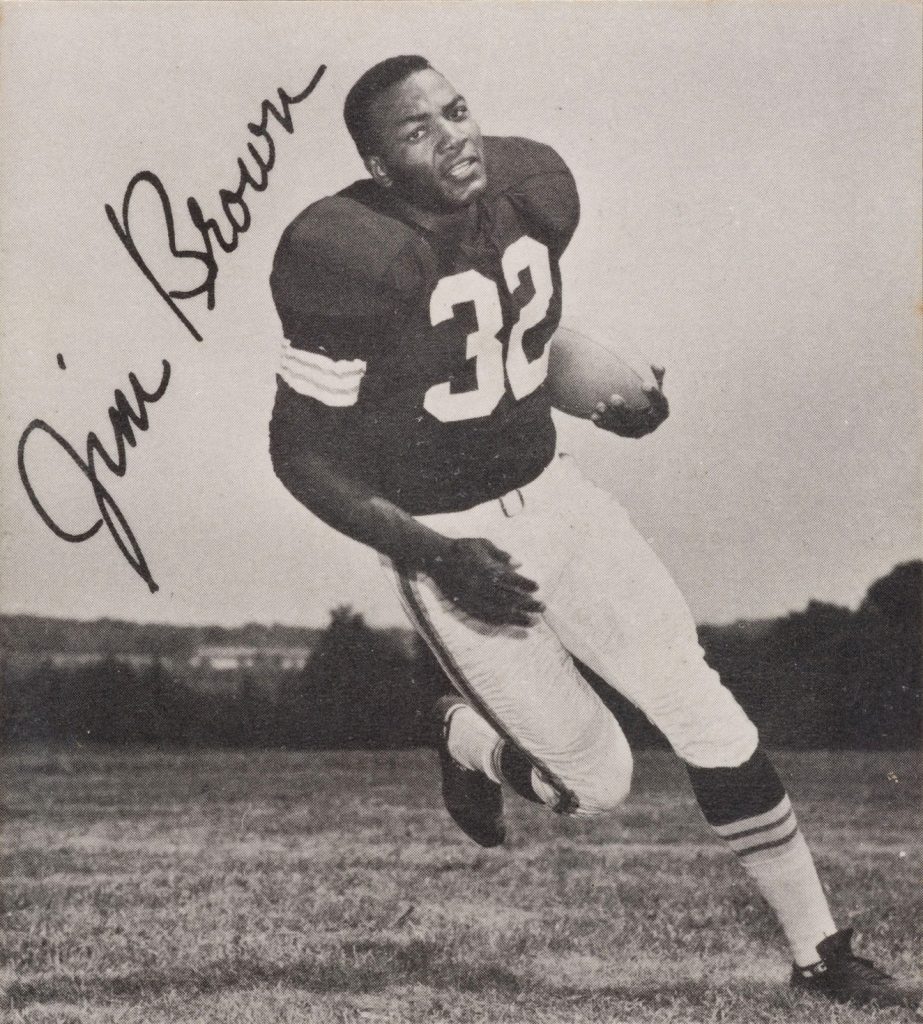
IMAGE SOURCE: Kahn’s Wieners, Heritage Auctions, Wikimedia Commons, public domain
Throughout the 1960s, the top salaries in the NFL would skyrocket compared to what they were just a few years earlier.
In 1964, for example, Cleveland Browns running back Jim Brown—who would later retire from the NFL at 30 years old to pursue an acting career—commanded the highest salary in the league: $50,000, according to ESPN. That’s more than 7.5 times the median family income reported by the Census Bureau for 1964.
The football season of 1965 would see quarterback Joe Namath, then a rookie, sign a $427,000 four-year contract with the New York Jets, Forbes reported. That works out to more than $56,000 per year not counting Namath’s $200,000 signing bonus, or upwards of $100,000 per year including that bonus.
One factor that influenced these salary increases among the top football players was the competition between professional football leagues. The American Football League (AFL) launched in 1960 and threatened to draw star players away from the National Football League before merging with the NFL, where it became the American Football Conference. If the NFL wanted to keep its superstar players, it would have to pay up. While the NFL and AFL agreed to the merger in 1966, they continued to operate as two separate leagues until 1970.
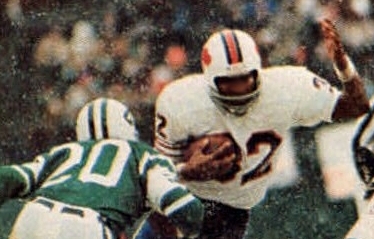
IMAGE SOURCE: Jeno’s Pizza, Wikimedia Commons, public domain
By the late 1960s, the most promising rookies newly drafted to professional football teams would be earning much more. A 1969 article in the Sarasota Herald-Tribune announced that O.J. Simpson had signed a contract with the Buffalo Bills that would result in him “getting more money than any rookie has been paid since the merger,” but the precise terms of that contract were not publicly disclosed.
Although Simpson’s exact salary amount is not available, this statement indicates that he was making more than the previously highest-paid rookie, San Francisco quarterback Steve Spurrier, whose three-year contract signed in 1966 is believed to have been “in the neighborhood of $250,000.” As such, it’s safe to say that Simpson’s annual salary under this four-year deal that began in 1969 was at least in the ballpark of $85,000 or above. At this time, the median family income in America was $9,400, according to the Census Bureau. Simpson was making at least 9 times what the average American family made (and potentially a lot more).
The highest-earning professional football players of the 1960s may have seen record earnings, but not all professional football players saw such wealth during this decade. Many pro football players had off-season jobs that ranged from salesman to teacher, the Kentucky Pro Football Hall of Fame reported. Year-round conditioning wasn’t expected of NFL players at this time, and players used their six months off to work another job.
Collective bargaining efforts brought some improvement to the earning potential of less standout pro football players. According to the NFL Players Association, the first collective bargaining agreement in professional football was signed in July 1968 and established a minimum salary of $9,000 for rookies and $10,000 for veteran players. The median family income for 1968 had reached $7,700, according to the Census Bureau.
In 1969, the average player salary in the NFL amounted to $25,000—just half of what top players had already been earning by the middle of the decade—and encompassed a 10-game season, plus three pre-season games and a month of training, the Kentucky Pro Football Hall of Fame reported.
[Jump to our focus on salary inflation in professional hockey.]
The 1970s Brings About Football Salaries First in the $100,000 Range, Then in the Hundreds of Thousands Range
By July 1970, minimum salaries for NFL players were up to $12,500 for rookies and $13,000 for veteran players, according to the NFL Players Association. In 1974, the average NFL player salary was “widely reported” to be $27,500, but the real figure was closer to $36,444, counting bonuses, according to The New York Times. Players on the best-performing NFL teams would earn an average of $11,478 in additional compensation for their participation in the preseason and postseason games. By the late ‘70s, the average NFL player contract would be quite a bit higher: up to $55,000 in 1977 and then $62,535 in 1978, according to The Washington Post.
These salaries exceeded the average family’s income—$9,870 in 1970, $11,100 in 1974, and $16,010 in 1977 (per the Census Bureau)—considerably. However, the rising earnings of NFL superstars were leaving the average pro football players in the dust.
In 1971, longtime Green Bay Packers quarterback Bart Starr earned a salary of $100,000 playing his final season before retiring, according to ESPN. This contract wasn’t just an all-time high for Starr personally, but also an indication of what earning potential was to come for the best football players in the NFL over the course of the decade.
In fact, in 1974, The New York Times reported that 5% of NFL players made $100,000 or more per year. Although that number (along with other key salary figures) was “the lowest of any major professional sport,” economic experts at the time predicted that professional football salaries would double within two years. They were right, at least as far as earnings increases among the highest-paid professional football players.
One standout pro football salary from the 1970s—at least, in theory—was the five-year, $575,000 contract middle linebacker Dick Butkus signed with the Chicago Bears in 1973. Broken down by the year, this contract would have yielded a salary of $115,000 per season. Unfortunately for Butkus, an unresolved knee injury prevented him from fulfilling that contract, and he ended up retiring later that year. Still, that per-year salary figure amounted to 9.5 times the $12,050 median family income the Census Bureau reported for 1973.
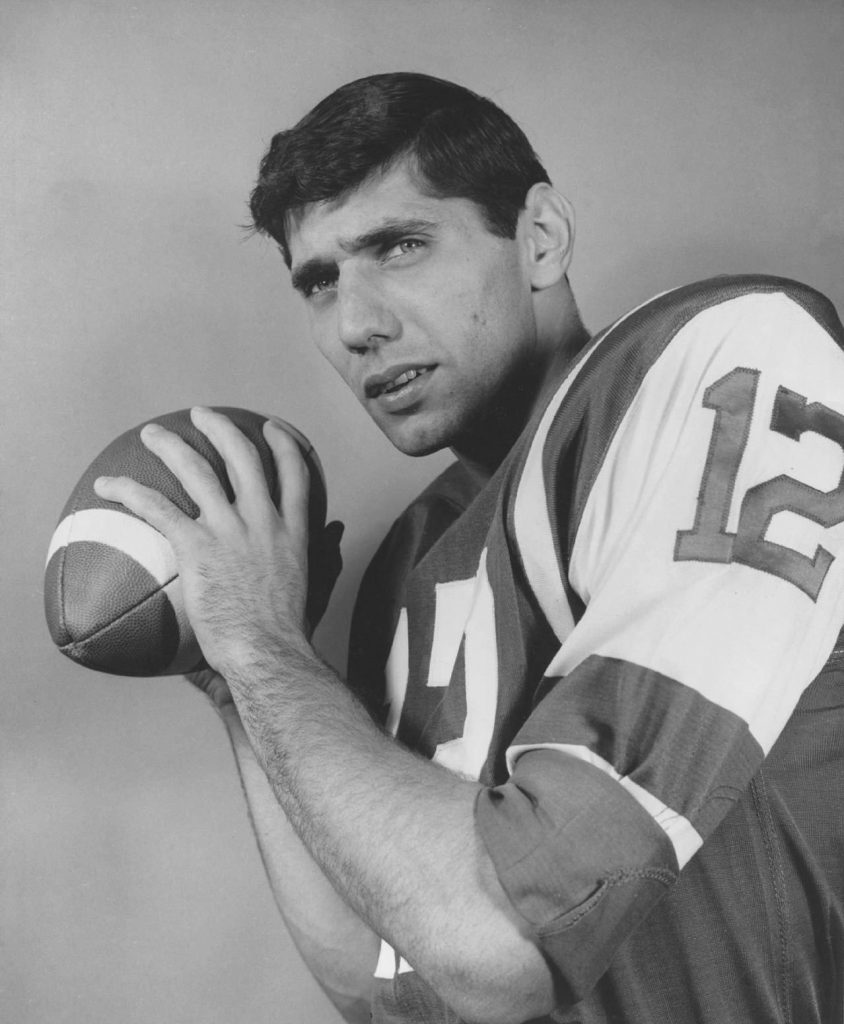
IMAGE SOURCE: New York Jets, Wikimedia Commons, public domain
Joe Namath became the highest-paid player in the history of the NFL with the 1975 contract he signed with the New York Jets. Under this contract, he would get paid $900,000 over two years, with a salary amount of $425,000 per year, according to The New York Times. Meanwhile, the median family income reported by the Census Bureau for 1975 was $13,720. Namath’s new contract had him earning nearly 31 times what the average American family made in a year.
1977 saw the Washington Redskins lead the league in spending on player salaries, most notably with fullback John Riggins commanding a yearly salary of “approximately $300,000,” according to The Washington Post. Other highly paid players on the team that season included reserve quarterback Billy Kilmer, with a yearly salary of $210,000, and wide receiver Charley Taylor, who made $135,000 that season. Riggins’ salary amounted to more than 18 times the $16,010 median family income the Census Bureau reported for 1977—not outshining the median family income by as much as Joe Namath had in the mid-70s, but still an undoubtedly lucrative annual salary compared to what most American workers could ever hope to make.
By 1979, retiring San Francisco 49ers running back O. J. Simpson was commanding a final-season salary that dwarfed Riggins’ $300,000 earnings. Simpson finished both the decade and his professional football career as the highest-paid player in the NFL, with a salary of $806,668, The Washington Post reported. In his final football season, Simpson’s salary amounted to nearly 49 times the $16,530 median family income amount reported by the Census Bureau.
Million-Dollar Salaries Emerge in the 1980s
The early 1980s saw pro football player salaries jump significantly, in large part thanks to player strikes in 1982 and 1987 that gave players more bargaining power, according to Career Trend. By 1986, the average player salary in the NFL had reached $198,000—more than tripling what it was a decade earlier and marking an eight-fold increase from 1969. If anything, the top salaries paid out by the league increased even more.
1980 brought about the first-ever million-dollar contract in the NFL, awarded to rookie receiver John “Lam” Jones by the New York Jets, The New York Times reported. However, the $2,100,000 contract was for six years, leaving Jones with a salary that, while lucrative, wasn’t quite groundbreaking.
In 1981, the highest-paid NFL player, New Orleans quarterback Archie Manning, earned a salary of $600,000. Trailing him and earning the title of second-highest paid quarterback in history was Terry Bradshaw, who had a $470,000 contract with the Pittsburgh Steelers, according to United Press International. Manning’s salary amounted to more than 26 times the median family income for 1981, which the Census Bureau reported as $22,390.
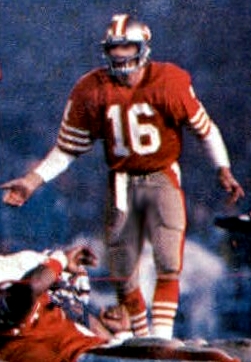
IMAGE SOURCE: Jeno’s Pizza, Wikimedia Commons, public domain
By 1984, quarterback Joe Montana’s six-year, $6,000,000+ contract with the San Francisco 49ers afforded him an annual salary of $800,000 plus a $200,000 signing bonus, The Washington Post reported. Montana’s salary amounted to 30 times the 26,430 median family income reported for 1984 by the Census Bureau.
In 1986, quarterback Jim Kelly became the highest-paid NFL player when he signed a five-year contract valued at between $7,500,000 and $8,000,000 to play for the Buffalo Bills. The contract awarded a yearly salary of $1,500,000 and was reported to have exceeded Joe Montana’s annual pay at the time by “at least $200,000,” the Los Angeles Times had reported. Kelly’s annual salary amounted to more than 50 times the $29,460 median family income the Census Bureau reported for 1986.
By the 1988 pro football season, at least 12 players in the NFL were earning $1,000,000 or more in base salaries and reporting and roster bonuses (but not signing bonuses), according to The Washington Post. Included in this list was Phoenix Cardinals quarterback Neil Lomax, who was said to have been the highest-paid player in the league at that time with a salary of $1,500,000, or 46 times the $32,190 median family income the Census Bureau reported for 1988.
With Salary Caps in Place, Lengthy NFL Contracts in the Tens of Millions of Dollars Range Dominate the 1990s
Something interesting happened in the mid-1990s that changed the future of professional football salaries. In 1994, the National Football League and its players agreed to adopt a salary cap. Under Articles 12-14 of the NFL Collective Bargaining Agreement, the salary cap is the maximum amount of money, based on total league revenue, that any team in the league is permitted to spend on total player salaries. The first salary cap established in 1994 was $34,608,000. By 1999, the salary cap had climbed to $57,288,000, according to Spotrac.
You might think that imposing a salary cap would lower professional athletes’ earning potential, but in fact, the opposite occurred. While a salary cap may limit how much the few richest and most spendthrift teams are able to offer their top-priority players, having a cap in place levels the playing field for all of the less wealthy teams. A spending cap means that teams with fewer resources—or those that simply have a tendency to be frugal—can still compete with the teams with more resources. A spending cap encourages less well-off teams to spend more money to attract talented players than they might otherwise if their rich rivals had no spending limits.
Prior to the establishment of a spending cap, the pay disparities among individual NFL teams were significant. For example, the Pittsburgh Steelers famously spent just $13,100,000 on the payroll for the entire team in 1990, less than half of the $26,800,000 the San Francisco 49ers spent on player payroll that year, according to CBS Sports.
As the data shows, establishing a league-wide salary spending cap didn’t stop the salaries of football superstars from continuing to climb at rates well above what the average American earner would see throughout the ‘90s and beyond. One thing the salary cap did accomplish was making teams get more creative about the way contracts are structured, which means that players sometimes signed deals in which they earned more money in prorated bonuses than they did in the form of their base salary.
By the 1990s, the rate by which the growth of salaries among the top-earning football superstars surpassed the rate of increase in the median family income had grown by so much that the increase in earnings among average Americans was negligible in comparison. Despite rising by more than $10,000 over the course of a decade, the median family income values during this decade almost disappear entirely from visual representation when set against the scale by which the best pro football players were now measuring their annual earnings.
Miami Dolphins quarterback Dan Marino earned the title of the highest-paid NFL player in history, and the 12th-highest-paid athlete overall, when he signed a contract extension in 1991 that would award him $23 million over five years. Although his 1991 salary, per his prior contract, was $1,600,000, Marino would earn an average of $4,600,000 per year once the new contract took effect. Still, under the lucrative new deal, only $250,000 of Marino’s earnings would be in the form of his annual base salary, according to the Chicago Tribune. Marino’s 1991 base salary amounted to more than 53 times the $29,943 median family income reported by the Census Bureau.
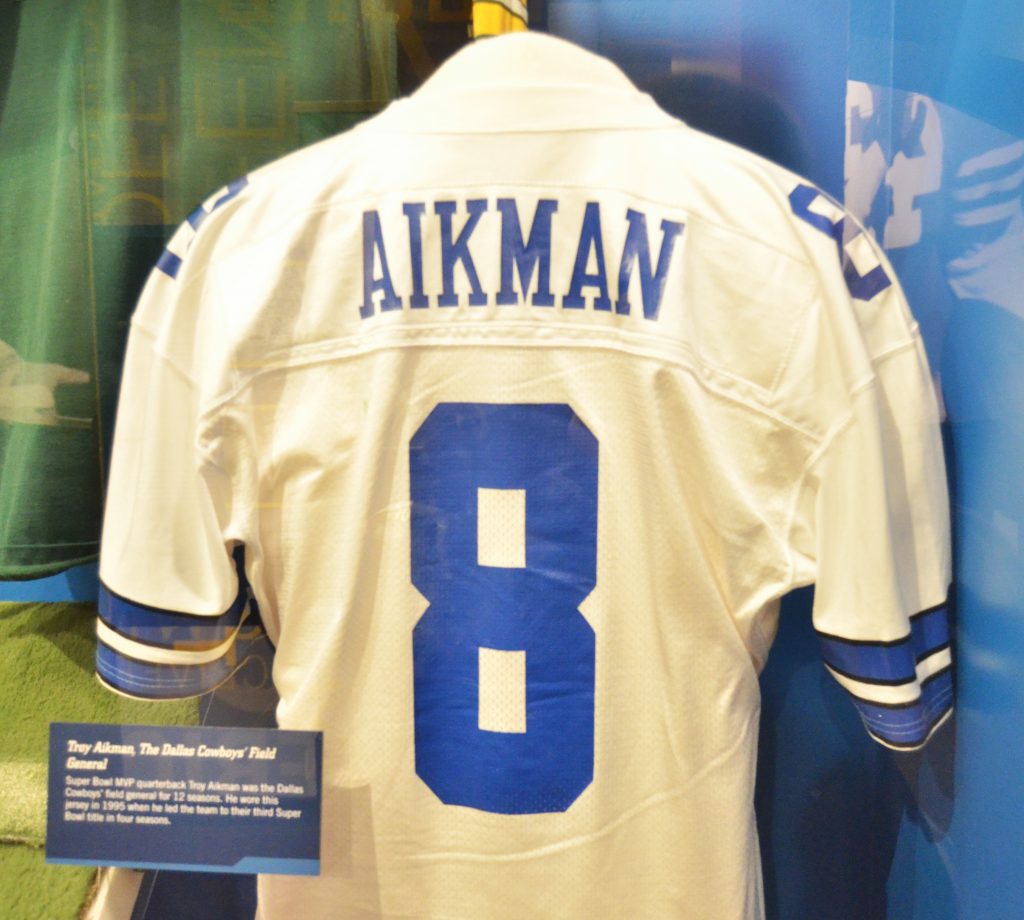
IMAGE SOURCE: Erik Daniel Drost, Wikimedia Commons, Creative Commons Attribution 2.0 Generic license
In 1993, quarterback Troy Aikman signed a $50,000,000 contract to play for the Dallas Cowboys for eight years. The contract, which included an $11,000,000 signing bonus, made Aikman “the richest player in NFL history,” according to the Los Angeles Times. This contract would begin with a salary of $1,750,000 for the 1994 season and culminate in a salary of $7,500,000 for the 2000 football season. Aikman’s 1994 base salary amounted to more than 52 times the $33,178 median family income the Census Bureau reported for the year.
Despite signing a $35,000,000 contract with the Dallas Cowboys in 1995, cornerback Deion Sanders wasn’t earning the big bucks for that NFL season or for the following years, at least not in terms of base salary. In fact, in his first season playing for the Cowboys, Sanders earned a base salary of only $178,000, although he received a prorated bonus of $1,700,000. The seven-year contract between the Dallas Cowboys and Sanders was so lopsided, with massive bonuses to be awarded in the later years of the deal, that the team was accused of trying to “circumvent” the salary cap, and the league no longer allows such contracts, according to Career Trend.
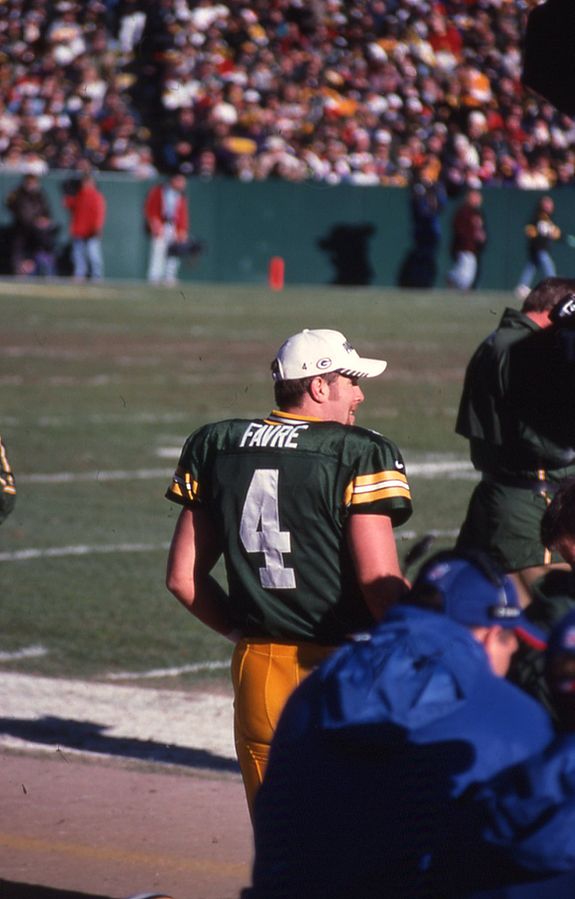
IMAGE SOURCE: David Wilson, Flickr: 19981213 36 Brett Favre, Lambeau Field, Wikimedia Commons, Creative Commons Attribution 2.0 Generic license
Following MVP-worthy seasons in both 1995 and 1996, Green Bay Packer quarterback Brett Favre landed the title of the highest-paid player in the NFL in 1997. The seven-year deal was reported to have been worth between $42,000,000 and $48,000,000, including a $12,000,000 signing bonus, according to The New York Times.
Favre earned a base salary of $1,600,000 that year, along with a $2,575,000 prorated bonus. By 1999, he would be earning a $4,300,000 base salary plus a $2,000,000 prorated bonus. Favre’s base salary alone was 102 times the $42,000 median family income reported by the Census Bureau.
The seven-year contract quarterback Drew Bledsoe signed with the New England Patriots that same year, valued at $42,000,000, paid considerably more in its first years, according to the Hartford Courant. In 1995, Bledsoe earned a base salary of $1,000,000 and a bonus of $2,592,857. 1996 saw Bledsoe’s base salary rise to $1,500,000 and his prorated bonus rise to $2,592,857, while 1997 brought his base salary to $2,700,000 and his prorated bonus to $2,592,857. Bledsoe’s 1997 salary amounted to nearly 73 times the $37,005 median family income the Census Bureau reported for the year.
1999 also saw quarterback Troy Aikman sign a nine-year, $86,000,000 contract extension with the Dallas Cowboys. Including a $20,000,000 signing bonus, this massive, long-term contract would again make Aikman the highest-paid player in the NFL, according to Forbes.
Salaries Range From Several Million Per Year to Tens of Millions Per Year Throughout the First Decade of the 2000s
Aikman’s $7,500,000 salary under the eight-year contract he signed in the ‘90s kicked off the new decade and the new millennium, but he wouldn’t be the only NFL player boasting salaries in the range of several million dollars. Earning potential was growing among the lesser-paid NFL players, too. Minimum salaries climbed to $484,000 for veteran players and $212 for rookies in the early 2000s, according to The Houston Chronicle.
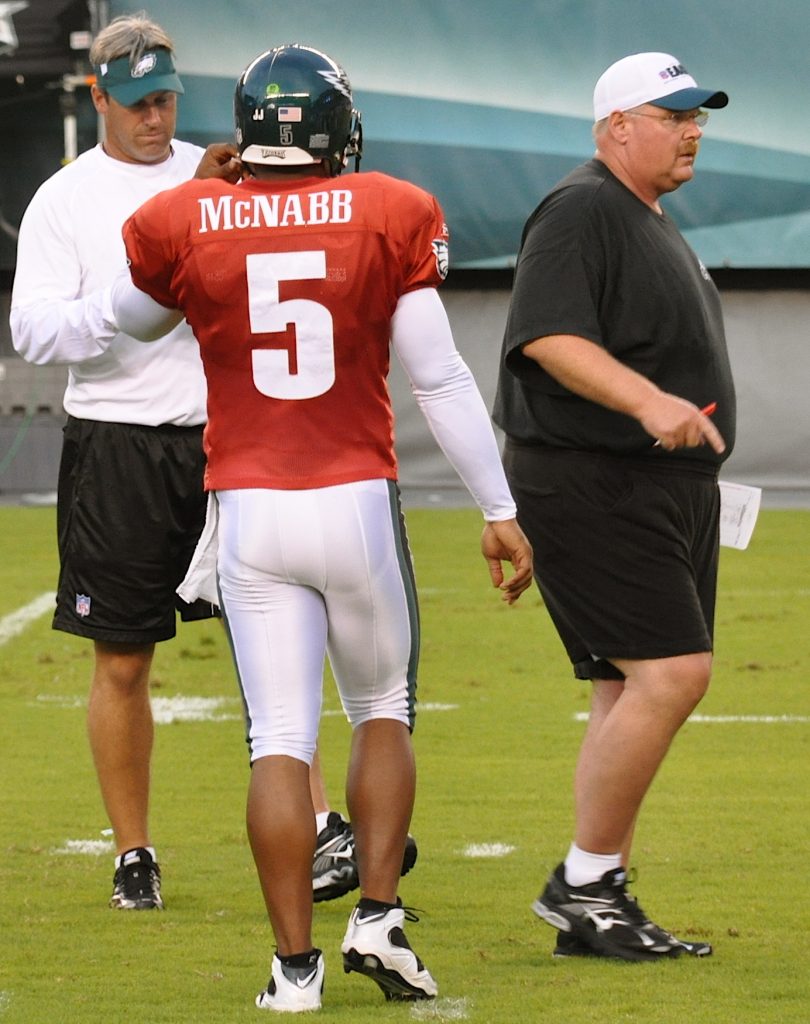
IMAGE SOURCE: Kevin Burkett, Wikimedia Commons, Creative Commons Attribution-Share Alike 2.0 Generic license.
All in all, Aikman reported earning $9,500,000 for the 2000 season, followed by the $8,017,857 earnings reported by Deion Sanders and the $8,000,000 earnings reported by Michael Strahan and Akili Smith, according to Spotrac. Aikman’s earnings amounted to 225 times the $42,148 median household income reported by the Census Bureau.
Philadelphia Eagles quarterback Donovan McNabb was the highest-paid NFL player in 2002, with total compensation of $15,389,225 reported, according to ESPN. McNabb’s earnings amounted to 362 times the $42,409 median household income the Census Bureau reported for 2002.
Quarterback Peyton Manning’s single highest-earning season occurred in 2004, when he reported earnings of $35,000,000—including a $34,500,000 signing bonus—while playing for the Indianapolis Colts, according to Business Insider.

IMAGE SOURCE: Erik Drost, Wikimedia Commons, Creative Commons Attribution 2.0 Generic license
In 2008, Pittsburgh Steelers quarterback Ben Roethlisberger reported earnings of more than $27,700,000, including a $25,300,000 signing bonus. That total compensation figure amounts to 535 times the $51,726 median household income the Census Bureau reported for 2008.
How does the whole salary cap fit into the earning trends of NFL players of the 2000s? The salary cap, like the earnings of individual superstar players, grew a great deal during the decade. NFL teams started the first decade of the new millennium with a salary cap of $62,172,000. The salary cap had reached $71,101,000 by 2002, $80,582,000 by 2004, and $102,000,000 by 2006. By the time the decade ended, the NFL salary cap had almost doubled what it was at the start of the decade, amounting to $123,000,000.
In 2005, Philadelphia Eagles quarterback Michael Vick reported earning $27,500,000 in his single highest-earning season in the league, Business Insider reported. Manning’s $35,000,000 compensation amounted to 789 times the $44,334 median household income reported by the Census Bureau.
[Jump to our focus on salary inflation in professional basketball.]
Salaries Hover in the $20 Million to $30 Million Range Throughout the 2010s
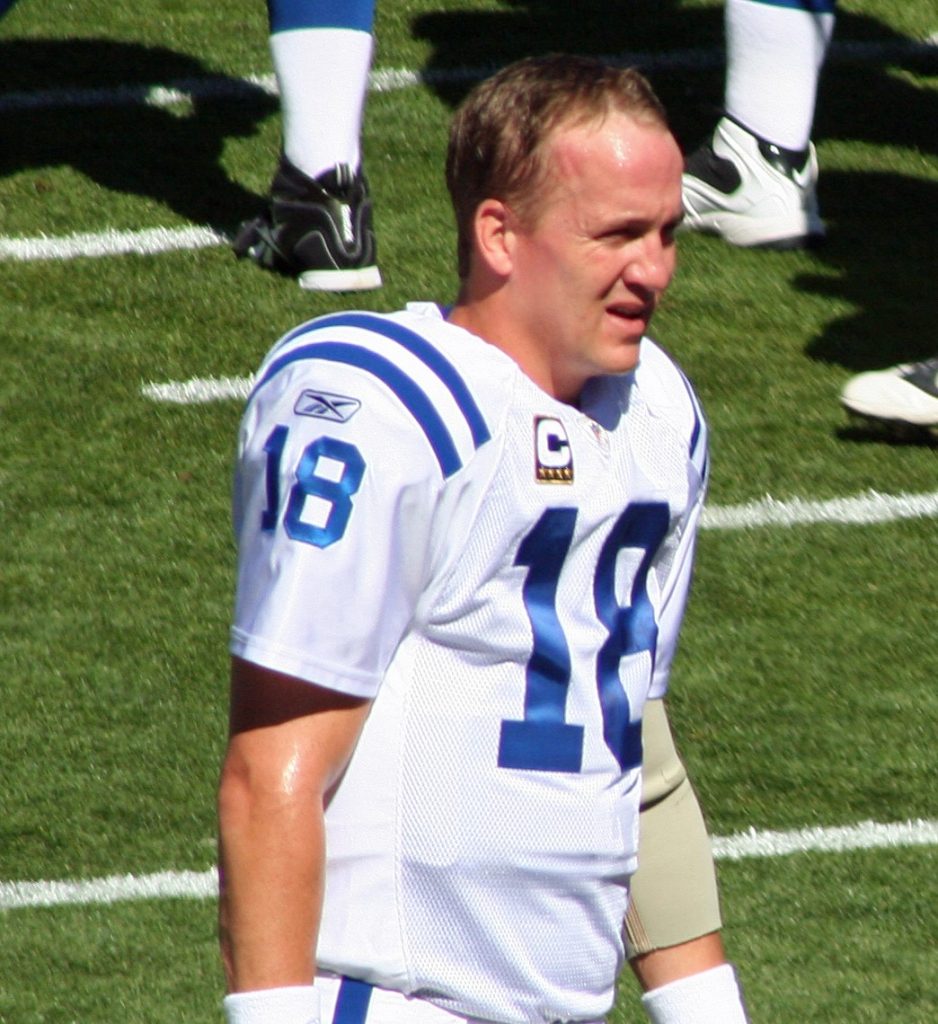
IMAGE SOURCE: Jeffrey Beall, Wikimedia Commons, Creative Commons Attribution-Share Alike 2.0 Generic license.
The top-earning NFL players throughout the 2010s decade would continue to command earnings above $20,000,000 per year, with the biggest superstars reaching heights of more than $30,000,000.
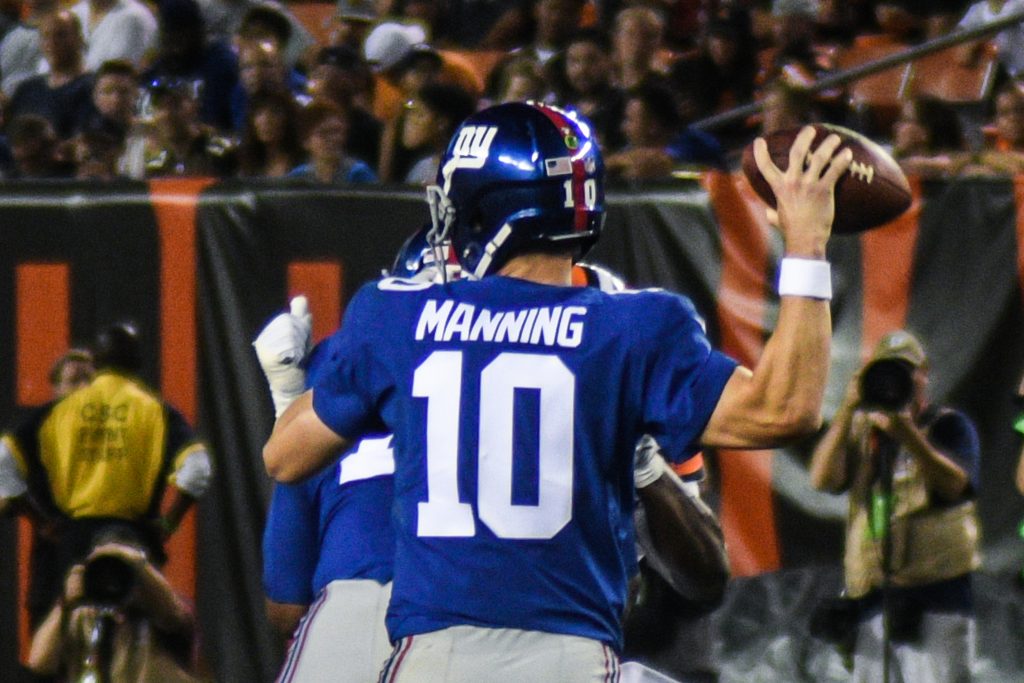
IMAGE SOURCE: Erik Drost, Wikimedia Commons, Creative Commons Attribution-Share Alike 2.0 Generic license.
The $23,000,000 earnings Peyton Manning reported for the 2011 NFL season made him the highest-paid player in the league that year, according to Reuters. Manning earned 459 times the $50,054 median household income the Census Bureau reported for 2011.
New York Giants Quarterback Eli Manning (younger brother of Peyton Manning) reported earnings of $37,000,000 in 2015, including a $1,000,000 signing bonus, according to Business Insider. That’s 663 times the $55,775 median household income reported by the Census Bureau for that year.
By 2017, the average NFL contract had climbed to $2,250,000, according to NFL Football Operations. The biggest superstars in the league were earning much more than that. Baltimore Ravens quarterback Joe Flacco was earning $24,550,000, trailed by Arizona Cardinals quarterback Carson Palmer’s $24,125,000 earnings, Sports Illustrated reported. Half a dozen other quarterbacks reported earnings at or above $20,000,000 based on salary cap hits. Flacco’s 2017 earnings amounted to 406 times the $60,336 median household income the Census Bureau reported for 2017.
Seattle Seahawks quarterback Russell Wilson finished the decade as the highest-paid player in the league, reporting $35,000,000 in earnings for 2019. Wilson’s earnings that year amounted to 509 times the $68,703 median household income reported by the Census Bureau.
The expiration of the previous collective bargaining agreement led to there being no salary cap in place for the 2010 NFL season, but a salary cap of $120,375,000 was reinstated for 2011. Salary caps grew slower during the first few years of this decade, lingering in the $ 120,000,000 range until 2014, when the salary cap amounted to $133,000,000.
From then on, the salary cap would increase by close to $10,000,000 annually—and in some years, even more—until the end of the decade. The 2015 NFL season brought a salary cap of $143,280,000, followed by $155,270,000 in 2016, $167,000,000 in 2017, $177,200,000 in 2018, and $188,200,000 in 2019.
[Jump to our look at salary inflation in professional soccer.]
$50,000,000 Salaries Characterize the 2020s (So Far)

IMAGE Source: All-Pro Reels, Wikimedia Commons, Creative Commons Attribution-Share Alike 2.0 Generic license
Under a record-setting 10-year, $450,000,000 contract extension he signed with the Kansas City Chiefs, quarterback Patrick Mahomes became the highest-paid NFL player of 2020 and 2021, reporting an average annual salary of $45,000,000 for the year, according to The Sporting News. Mahomes was earning more than 666 times the $67,521 median household income reported by the Census Bureau for the year 2020.
Green Bay Packers quarterback Aaron Rodgers, a Super Bowl champion and two-time MVP, was the highest-earning player in the NFL for 2022, commanding an annual salary of $50,300,000 as part of a three-year contract extension, according to The Sporting News.
That’s almost 10% more than the $45,780,966 salary commanded by the highest-paid professional basketball player in the NBA for the 2021 through 2022 season, Stephen Curry, and over 30% more than the $37,116,667 salary awarded to Mike Trout, the highest-paid professional baseball player in the United States.
The $198,200,000 salary cap of 2020 dropped to $182,500,000 for the 2021 season. This 8% drop was attributed to losses in league revenue that resulted from the COVID-19 pandemic, according to Sports Illustrated. However, the 2022 salary cap bounced back to a record high of $208,200,000.
Inflation in Pro Football Franchise Operating Costs and Revenue
As you might imagine from the massive salaries earned by top-performing players, running a football team—or even an entire league—isn’t cheap. Operating costs have climbed a great deal from what they were during the humble beginnings of professional football.
Payroll is a big part of these costs—more so for the NFL than for major leagues in other professional sports. While the MLB allows professional teams to have up to 26 baseball players on the roster and the NBA limits the size of professional basketball teams to 15, NFL teams have as many as 53 players on their roster.
Fortunately, revenue has climbed, too. Television played a major role in the increasing popularity of professional football in the United States from its early days to its more established position as a favorite (and profitable) sport nationwide.
The first televised professional football game, between the Philadelphia Eagles and the Brooklyn Dodgers, took place in October 1939. However, it wasn’t until the early 1970s that the sport of professional football had eclipsed baseball as the most popular spectator sport in the United States, according to NFL Football Operations.
League revenue was up thanks to a combination of merchandise sales, game ticket sales, television contracts and sponsorships. In 1974, 62% of clubs’ income was in the form of ticket sales, The New York Times reported. The fact that the NFL reported an average per-ticket income amount of just $6.80 drives home the popularity of attending games live and in-person; The New York Times reported that ticket sales made up 62.1% of a club’s $6,200,000 revenue in 1973.
As of 1974, the NFL and its teams reported a total income amount of $171,000,000. This figure represented a 5% increase from 1973’s total income, $162,500,000, yet eight of the 26 teams in the league reported losses for the year, according to The New York Times. All in all, the league was considered the 689th largest business operation in the United States in 1974 based on the total revenue reported.
In what may seem like an unimaginable perspective today, the media of the times contemplated whether “pro football hit its peak” by 1969, according to U.S. News & World Report. It’s true that the developments of the time had seemed to outshine all expectations for the popularity and profitability of the sport, but in many ways, the best (and most lucrative) years were yet to come.
By the 2000s, the NFL reported revenues in excess of $5,000,000,000 for the first time ever, according to the NFL Players Association. By 2020, that figure had climbed to $12,200,000,000,000—multiplying 71 times from what the NFL revenues had amounted to in 1974.
As of 2020, the average franchise value among NFL teams was more than $3,000,000,000. Four teams that year reported franchise values above $4,000,000,000, including the Dallas Cowboys, the New England Patriots, the New York Giants, and the Los Angeles Rams, according to Forbes.
Today, the NFL is the most profitable professional sports league in America, Statista reported. Despite the massive payroll expenses that arise out of a sport where top earners make tens of millions of dollars per year, there’s little doubt that the profitability of professional football is alive and well—or that the contracts awarded to top-earning NFL superstars will continue to grow.
Sports columnist Martin Rogers predicted in 2022 that the first contract under which an NFL player will earn $100,000,000 per year will happen “sooner than you think.” Scott Mitchell, former NFL player and current host of the podcast KSL UnRivaled, went so far as to predict that the first contract to award an NFL player $100,000,000 per year would become a reality in 2029—and that the player to be awarded that contract would be Arch Manning, nephew of famous NFL quarterbacks Peyton and Eli Manning who was, at the time, still a high school student.
Whether the first $100,000,000-per-year salary comes to fruition in two years, 10 years, or 20 years, the professional football salary trends make one thing clear: there’s every reason to believe that the most sought-after players in the NFL will keep pulling record-shattering contracts for the foreseeable future of the sport.
***
Athletes and sports teams might make a fortune. But what about the cities where they play? Find out how sports stadium construction impacts local economies.
